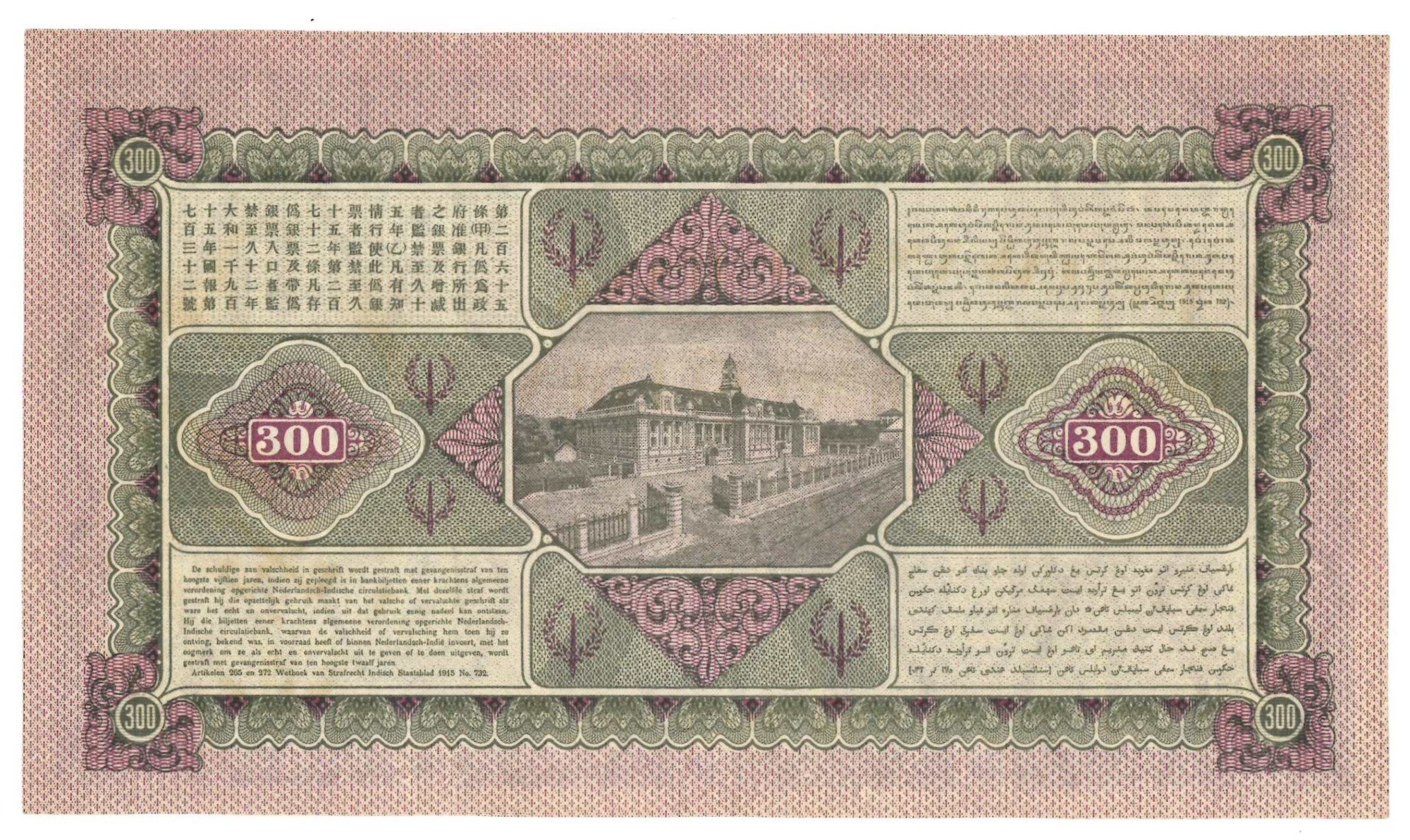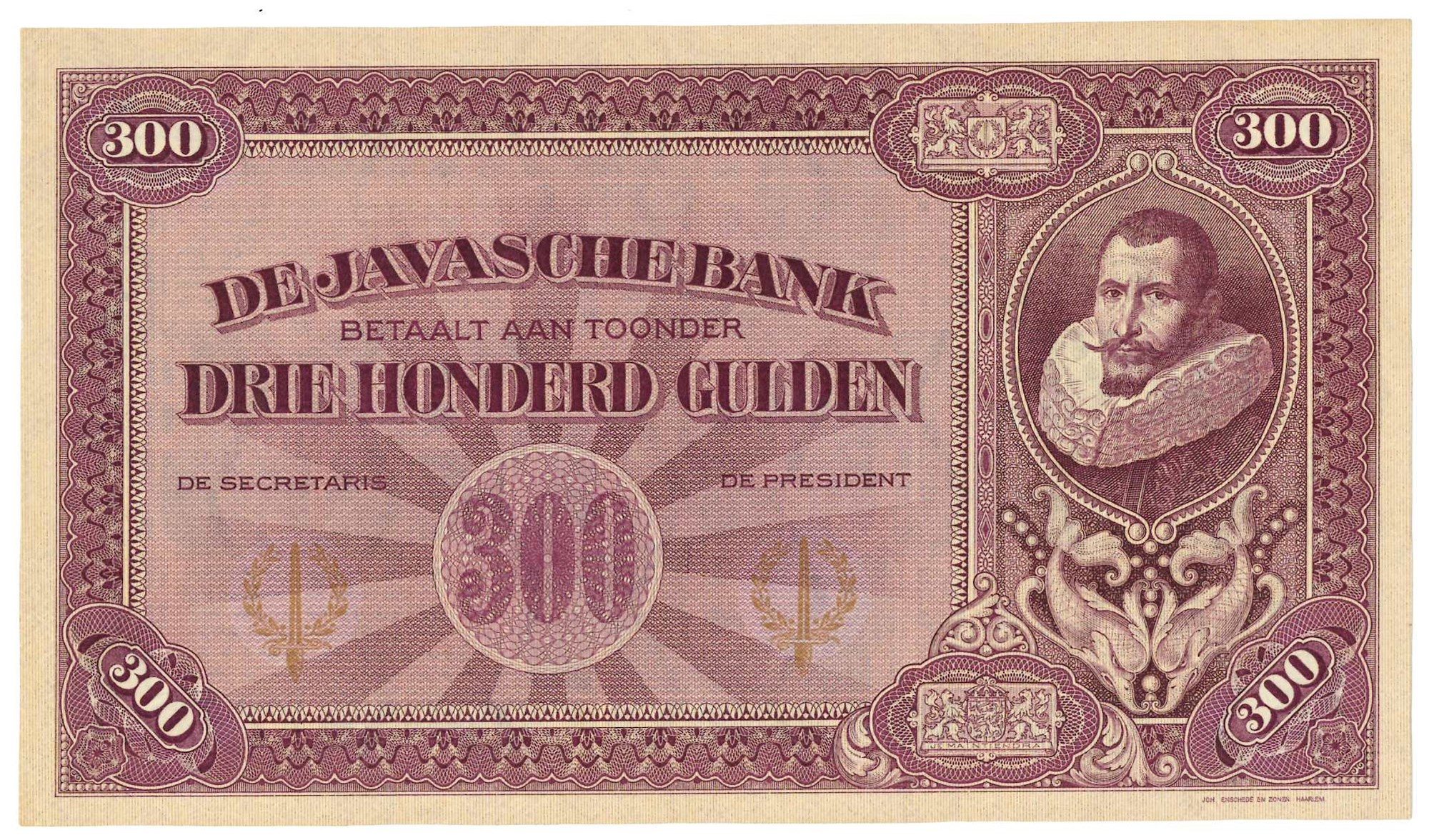Acquire this unique banknote?
Dutch Batavia founder on extremely rare paper money
Banknote 300 gulden 1925 Dutch East Indies
On 2 April 1595, the first fleet of Dutch merchant ships departed for a long voyage to the East Indies. The journey was very dramatic. Of the 249 crew members, 89 survived the trip and the merchandise was meagre. But the goal was achieved: a trade journey to the East Indies without too much trouble from the Portuguese proved possible. This “first sea voyage” was the beginning of the influential Dutch trading company “Vereenigde Oostindische Compagnie – VOC (Dutch East India Company, 1602-1800).
Powerful trading centre
Jan Pieterszoon Coen (1587-1629) was of great significance to the VOC. He was the fourth governor-general within the VOC and considered the founder of the Dutch rule in the Indian archipelago. He founded the trading post Batavia and managed to acquire a large part of the monopoly in the spice trade. Under his leadership, Batavia developed into a strong trading centre. However, this involved struggles and setbacks. He was a strict ruler and the trade wars claimed the lives of many.
At around 1782, the first paper money was put into circulation and in 1815, the first guilder series was printed by Johan Enschedé printers in Haarlem.
Need for paper money
The development of the trade in the Indian archipelago also brought with it the introduction of paper money. At around 1782, the first paper money was put into circulation and in 1815, the first guilder series was printed by Johan Enschedé printers in Haarlem. This was the beginning of a long history of paper money distributed by the “Javasche Bank”.

Rare 300 guilders
Paper money from the colonies is a very sought-after collector’s item worldwide. Due to the tropical climate, the quality of the paper money has become very poor and has not been preserved. In this auction, we offer a unique collection of Dutch East Indies banknotes of exceptional quality. This includes certain items that have never been offered on the market before. Like the extremely rare 300-guilder test banknote from 1925 in ‘proof’ quality with the engraved portrait of Batavia founder, Jan Pieterzoon Coen. The banknote was printed by Joh. Enschedé in Haarlem.
Unique Dutch-Indian banknotes
Also unique is the “Javasche dansers” [Javanese dancers] specimen series – designed by C.A. Lion Cachet – in very high quality and various print versions. And this without mentioning the typical “specimen stamp”. Finally, the original 1-guilder (type 1815) and the 10-guilder banknotes (type 1864) are noteworthy. Both are (very) rare specimens of Dutch-Indian paper money.


